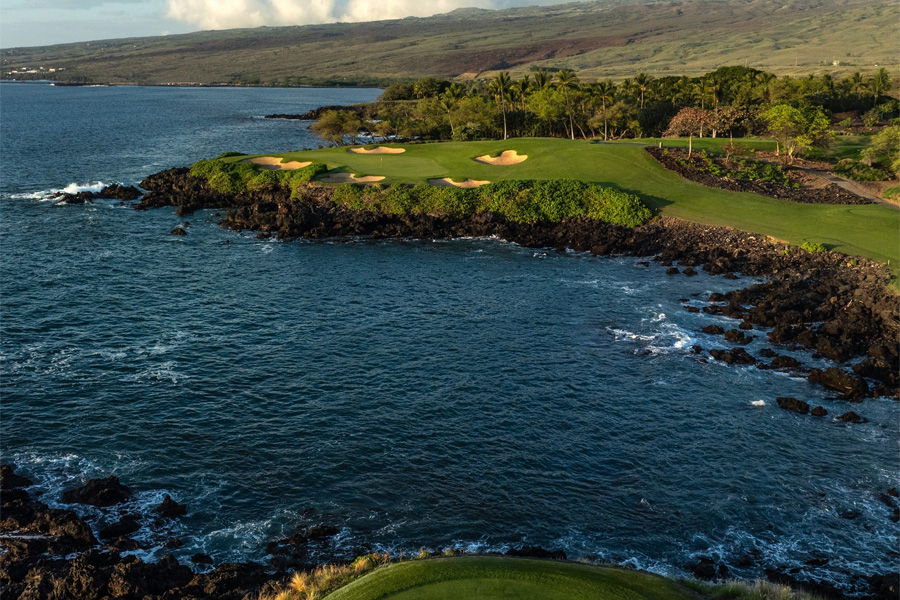
Mauna Kea Golf Course revitalization is now complete.
KOHALA COAST, ISLAND OF HAWAII: Modern improvements and enhancements to the Mauna Kea Golf Course (driven by the vision of Robert Trent Jones Jr.) are now complete. His design honors his father’s original vision for the layout. “The greens needed attention,” detailed Kimo Meikle, director of golf course maintenance. “Paspalum and an occasional patch of goose-grass were infiltrating the TifEagle surfaces. Since paspalum is thicker than TifEagle, it creates uneven putting surfaces and creates a ‘losing battle’ to maintain best-in-class conditioning.”
The difference between “then and now” is palpable. “It is so consistent and fun to play,” said Meikle. “Best of all? No grain like you might find on other courses that have Bermuda greens [common among the Hawaiian Islands].
“A conscious decision was made to soften the course, realizing we are a resort where you don’t have the benefit of local knowledge. One of the player-friendly improvements was reducing the number of bunkers from 99 to 75. If you had played here in recent years, an errant shot might have found one of our deep bunkers that required traversing a set of steps down to the sand to reach your ball. Often, your only playable shot was to go backwards. No more,” rejoiced Meikle. “We added 7,500 cubic yards of soil to create ‘softer’ hazards that aren’t as deep and have fewer ridges and lips.”
During the renovation process, special attention was paid to the famous third hole, a par-3 that plays across crashing ocean waves. In order not to disturb the original look, old pictures were studied. Ultimately, only minor changes were made to the tee boxes and green. Three bunkers were modified. “The two bunkers behind the green were connected, and one bunker between the lava and grass was eliminated,” recalled Meikle. “While it enhanced the look of the hole, few golfers ever found its trouble. I called it a ‘lighthouse bunker’ that was there more for aesthetics than playability.”
Continuous Course Improvements
Not long after the Mauna Kea Golf Course reopened, its sister course (that is often overlooked by visitors, but shouldn’t be), Hapuna Golf Course, closed for a remodel with wall-to-wall Platinum Paspalum.
“The elevation change at Hapuna is noticeable,” described Meikle. “From the first tee to the No. 11 tee box [the highest point of the course], you encounter several microclimates. The scenery from the back nine is simply jaw-dropping, with lush fairways, the sloping hillside of a volcano, and long-range views of the Island of Maui clearly in sight. During whale season, it’s common to see pods breaching the Pacific’s blue waters. Anyone familiar with The Wizard of Oz would exclaim, ‘Whoa, I’m not in Kansas anymore!’”
For seasonal golf packages, visit MaunaKeaResort.com.